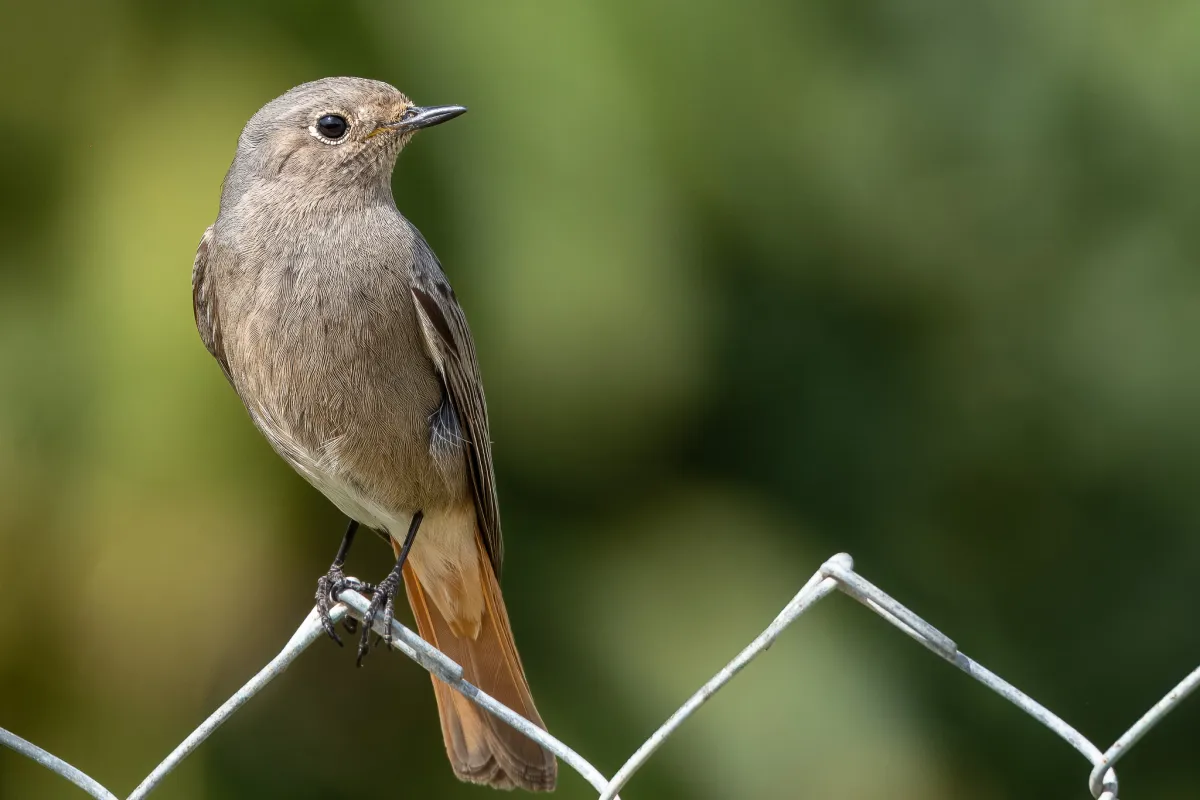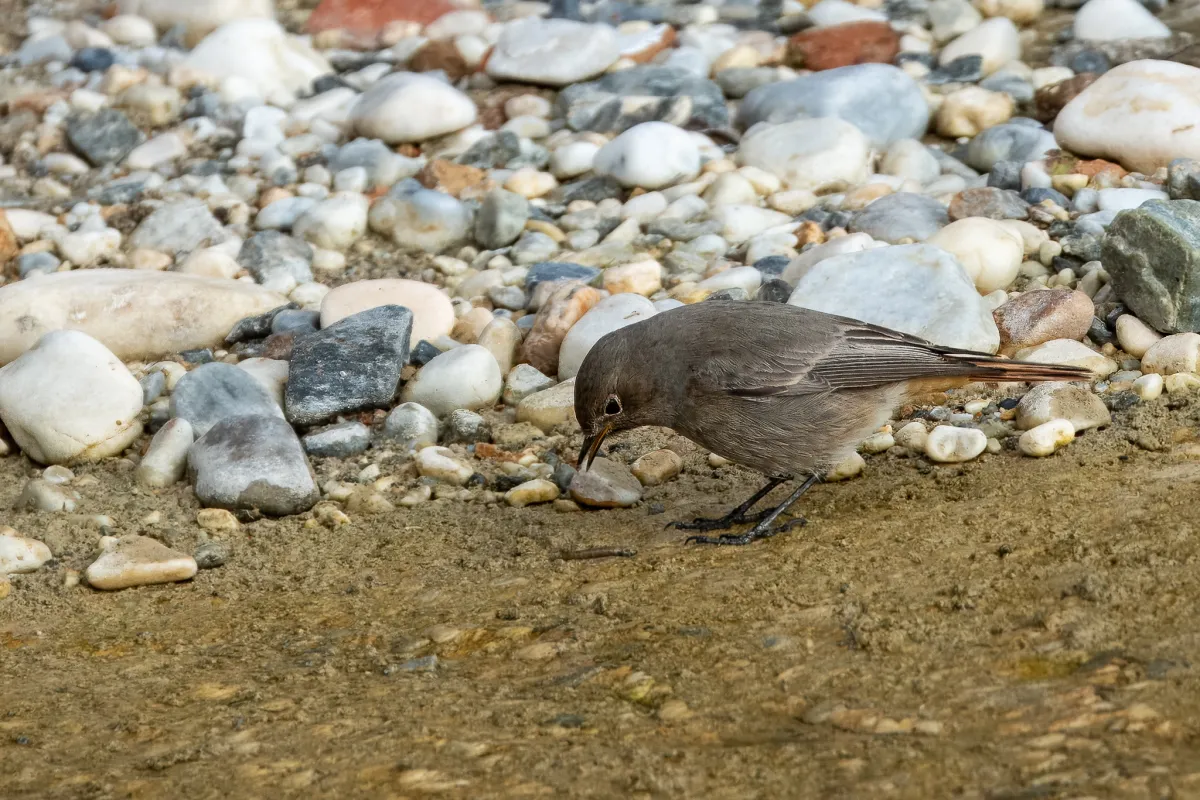The Black Redstart, Phoenicurus ochruros, is a fairly common songbird seen throughout southern Spain and I see quite a few each day. With its striking black and red plumage, this small passerine bird holds a special place in the hearts of birdwatchers and nature enthusiasts. It was formerly classified as a member of the Thrush family, Turdidae, but is now part of the Old World Flycatcher family, Muscicapidae.

Physical Appearance
True to its name, the Black Redstart exhibits a stunning contrast of colours. The male Black Redstart, which grows to a length of 13–14.5 cm (5.1–5.7 in), boasts glossy black feathers, while its tail and undertail coverts are adorned with vibrant reddish-orange hues. In contrast, the female has a more subdued appearance, with brownish-grey feathers replacing the striking black seen in the males. The characteristic red tail, however, remains a distinguishing feature for both genders.

Habitat and Distribution
These birds are highly adaptable and can be found in a variety of habitats, ranging from rocky slopes and cliffs to urban areas. Black Redstarts are distributed across Europe, Asia, and North Africa, with their breeding grounds extending from the Iberian Peninsula to the Himalayas. During migration, they may also venture into other regions, making them a treat for birdwatchers in unexpected locations.

Behaviour and Diet
Black Redstarts are known for their lively and active behaviour. They are often seen perching on exposed rocks or buildings, using their tails to balance as they flit about in search of insects. Their diet primarily consists of insects, spiders, and small invertebrates, which they catch with agile and acrobatic movements. The redstart’s distinctive tail-quivering behavior is thought to flush out prey, making it easier to spot and capture.

I class it as one of the fascinating bobbers and waggers, along with wagtails and sandpipers.

Breeding and Song
During the breeding season, male Black Redstarts establish and defend territories, using their melodious song to attract mates. The song is a series of melodious whistles and trills that add a musical charm to their surroundings. Nests are typically built in crevices or holes in rocks and buildings, providing a secure location for the female to lay her eggs and raise her brood.

The clutch consists of 4 to 6 eggs that are usually white but can also be pale blue. The young are cared for and fed by both parents and fledge after 12–19 days.
Conservation Status
While the Black Redstart is not considered globally threatened, local populations may face challenges due to habitat loss and changes in urban landscapes. Conservation efforts are crucial to maintaining suitable nesting sites and preserving the diverse environments these birds inhabit.

